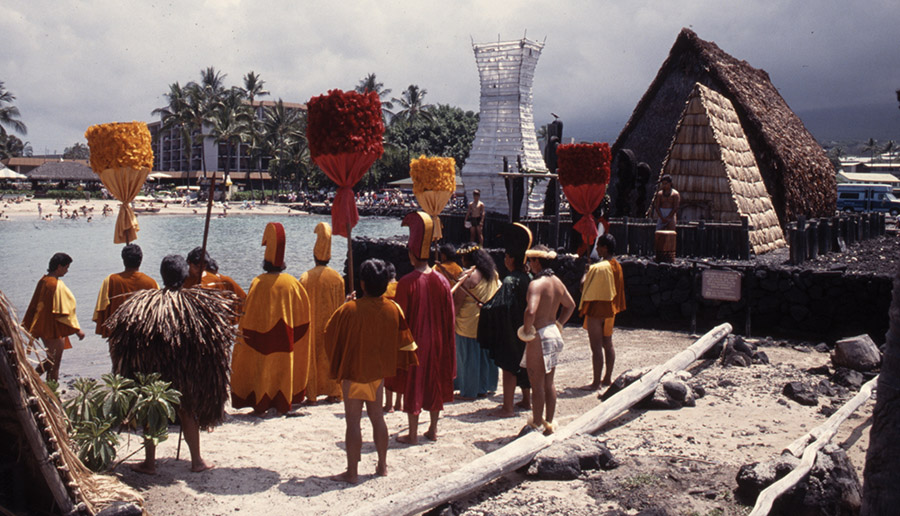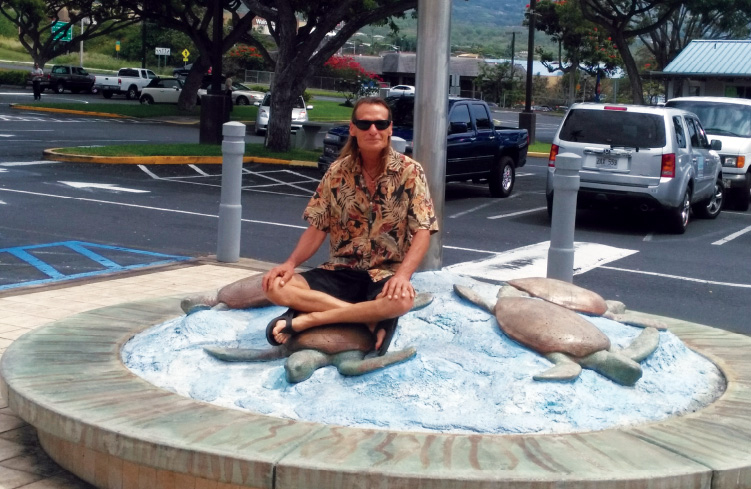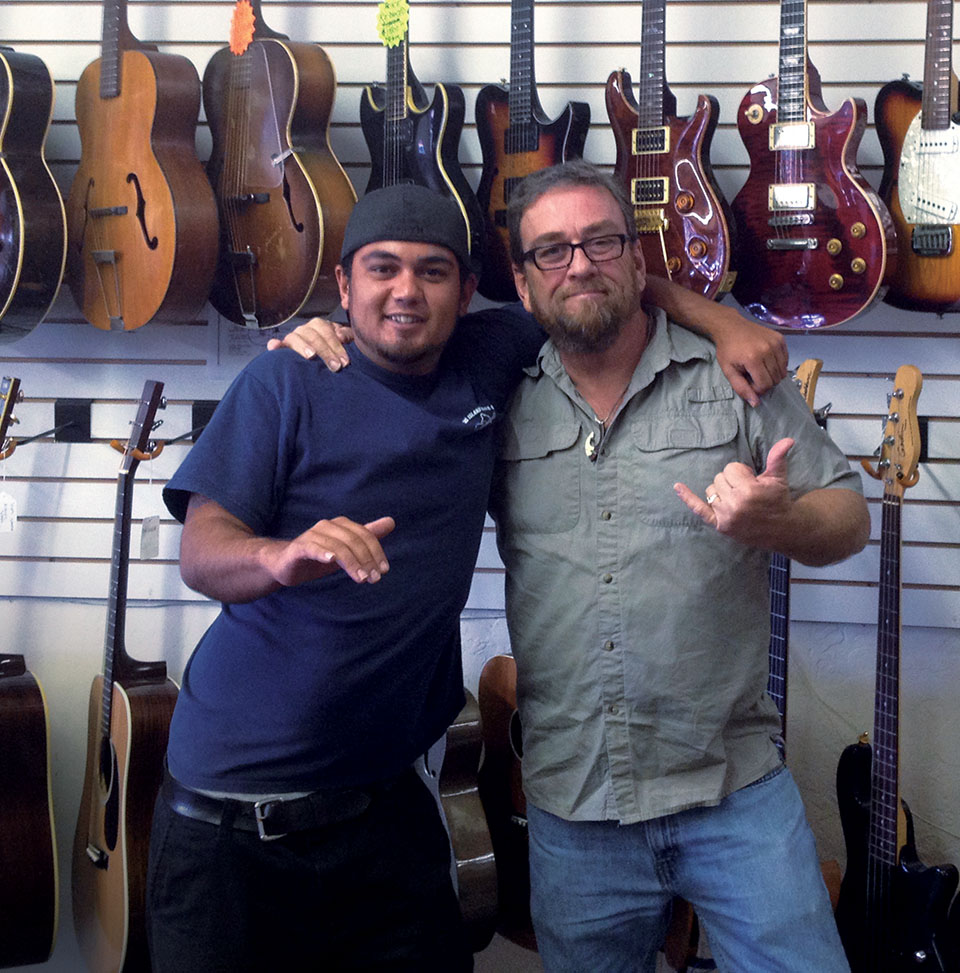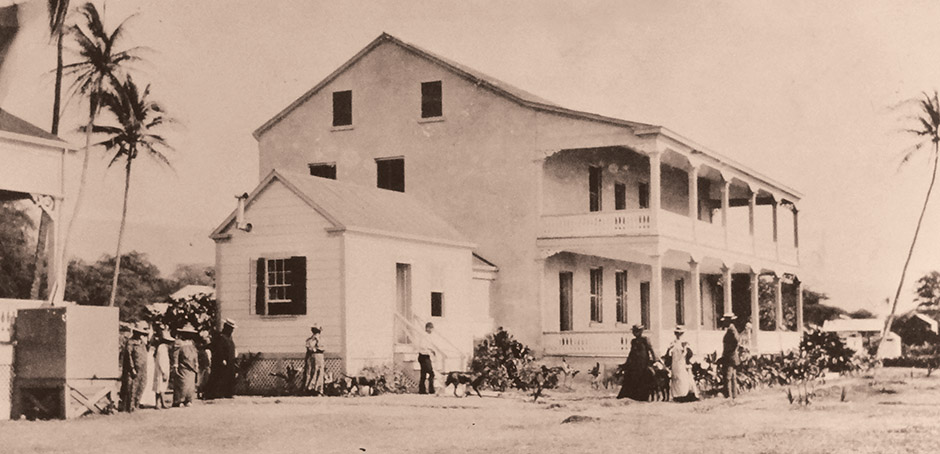
Then and Now: Hulihe‘e Palace – From Mansion to Museum
 By Fannie Narte
By Fannie Narte
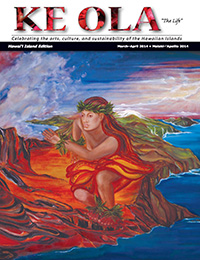
Located in the center of Historic Kailua Village on Ali‘i Drive and surrounded by water on three sides is a museum called Hulihe‘e Palace. To its north is a small beach called “Niumalu,” where honu (turtles) often visit to feed on the limu (seaweed) found on the rocks. On the south part of the Palace’s property is Kiope Pond where mountain fresh water from the Wai‘aha stream empties and eventually mixes with the salt waters of the Pacific Ocean. In its backyard rests a picturesque ocean view—a photographer’s delight and playground for the imagination.
From this vantage point, what did the people see and feel when they looked out into Kailua Bay a hundred, or 200 years ago? Did they feel the gratitude and joy that visitors experience when they watch the majestic sun paint the sky as it meets the horizon at the end of the day? Did they feel enveloped by a sense of serenity and joy as they looked out into the sea?
Take a walk through Hulihe‘e to learn its history. Roam the six rooms and see the authentic furnishings and artifacts owned by the people who once lived there. Climb the koa stairs they climbed. Glance out the windows to imagine what they might have seen. Contemplate what their lives were like in this palace more than 170 years ago.
Construction
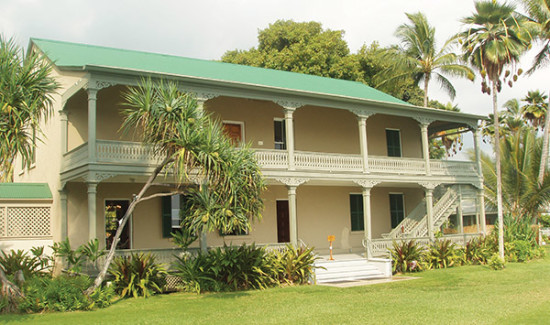
The large stone house was originally built for and by John Adams Kuakini, Governor of the island of Hawai‘i. John Kuakini was a cousin of King Kamehameha I and the brother of Queen Ka‘ahumanu, the favorite wife of Kamehameha I. Although little information exists regarding the actual construction of Hulihe‘e, we know that excavation work began in 1837, and a year later, Hulihe‘e was completed.
A visiting editor of the Sandwich Island Gazette wrote, in part, “The new stone building is intended for a mansion house. It is two stories in height with a garret above and has a beautiful front with a portico and a spacious yard around it. The inside of the house is splendidly finished off with Koa” (Doyle 10).
Hulihe‘e was a “source of great pride to Kuakini” (Doyle 10). For six years, he enjoyed his home and found pleasure in sharing it with his family and visitors. In 1844, he died at the age of 54.

After Kuakini, Hulihe‘e changed ownership seven times and was visited by many dignitaries and foreigners before being acquired by the Daughters of Hawai‘i in 1927.
William Pitt Leleiohoku, Kuakini’s adopted son, inherited Hulihe‘e. When William died in 1848, his widow, Princess Ruth Ke‘elikōlani, inherited Hulihe‘e. However, Princess Ruth did not occupy Hulihe‘e as her home. Instead, she built a “substantial grass house behind the palace for herself,” and used Hulihe‘e for entertaining and housing visitors (Doyle 12).
Princess Ruth allowed her royal relatives the use of Hulihe‘e during their vacations. Kamehameha IV, Alexander ‘Iolani Liholiho, and Queen Emma, who all lived on O‘ahu, visited Hulihe‘e often. It is interesting to note that in 1861, during a stay at Hulihe‘e, Kamehameha IV signed the Proclamation of Neutrality, a document that resulted from reports of a civil war in America.
“In 1883, Princess Ruth became ill and returned to the peace of Hulihe‘e” (Doyle 17). Queen Emma and Princess Bernice Pauahi Bishop traveled to Kailua to care for her. However, Princess Ruth died a few hours after their arrival. Princess Pauahi then inherited Hulihe‘e. She died a year later and Hulihe‘e was turned over to her estate.
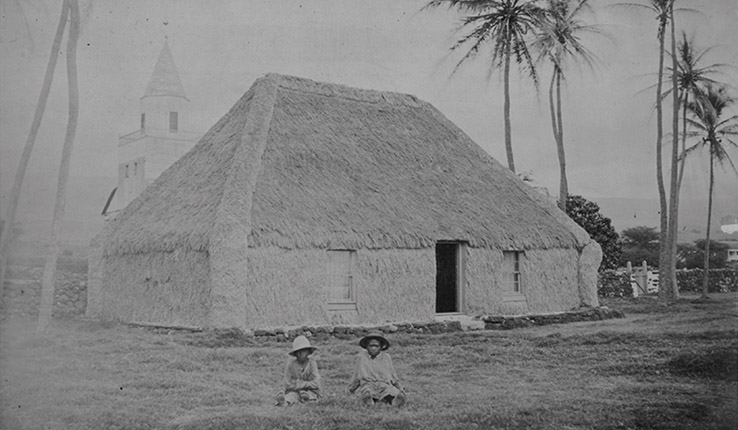
Kalākaua Renovates Hulihe‘e
In 1885, King David Kalākaua purchased the property from the Bernice Pauahi Bishop estate. King David’s ownership marked the beginning of a period of major renovations for Hulihe‘e.
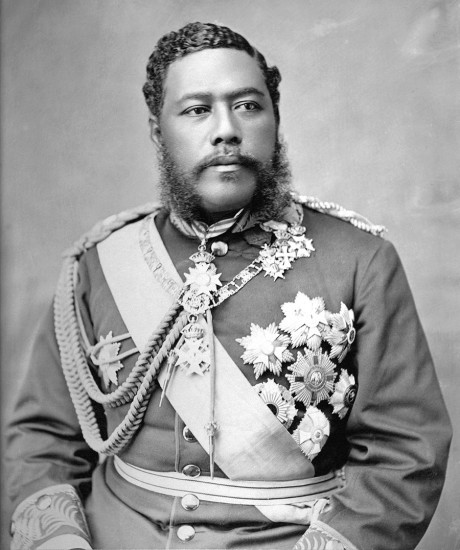
For the next six years, King David enjoyed remodeling and refurbishing Hulihe‘e. Influenced by
his world travels, he had the inside of the building and the stone exterior plastered.
“He installed telephones, enlarged the ocean lanais, built a large pavilion, relocated and rebuilt the cook house and remodeled the one-story guest house into a two-story bungalow” (Doyle 17).
In addition, King David “removed Princess Ruth’s grass house, demolished a stone storehouse near Kiope Pond and installed a large flag pole on the waterfront. He furnished the house with rugs, paintings, Japanese teacups, Victorian ornaments, and great quantities of china and glassware for entertaining” (Doyle 17).
King David enjoyed his “restful place and entertained many dignitaries, including several members of the Austrian royal family” (Del Piano 103).
In 1891, King David died and Queen Kapi‘olani inherited Hulihe‘e. When Kapi‘olani died in 1899, her two nephews, David Kawānanakoa and Jonah Kūhiō Kalaniana‘ole became the new owners. During the next 15 years of ownership, their visits to Hulihe‘e were infrequent. This is probably the period of time that the building began to suffer from neglect.
In January 1914, Mrs. Bathsheba Allen purchased Hulihe‘e for a reported $8,600 (Doyle 18). For the first time since it was built, Hulihe‘e was no longer in the hands of the Hawaiian monarchy. Mrs. Allen’s death a month after her purchase left the house empty for the next 10 years.
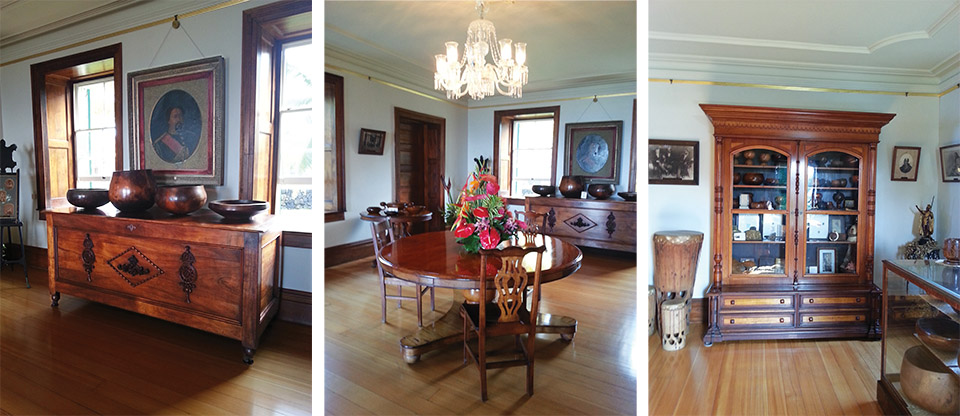
The Daughters of Hawai‘i Preserve the Palace
Hulihe‘e, once a beautiful estate and home to royalty, had fallen into disrepair. In 1924, “the old Kailua Palace,” came to the attention of the Daughters of Hawai‘i. They began the long process of acquiring the property. Finally, three years later, the Hulihe‘e Palace became the kuleana (responsibility) of the Daughters (Del Piano 106).

The Daughters immediately began their work. Renovation and repair plans were made and executed. The grounds were cleaned and replanted. They refurnished and redecorated the Palace through purchases, gifts, and donations from many generous people. Pieces of furniture that were originally in the Palace were returned. Fundraisers were held and special pieces of furniture were purchased with the proceeds.
“Members of the Daughters and Sons of Hawaiian Warriors raised funds by putting on a musical program and with the proceeds purchased a tall wardrobe with glass doors made of koa and kou that had once belonged to Princess Ka‘iulani. It stands in the Palace today” (Del Piano 133).
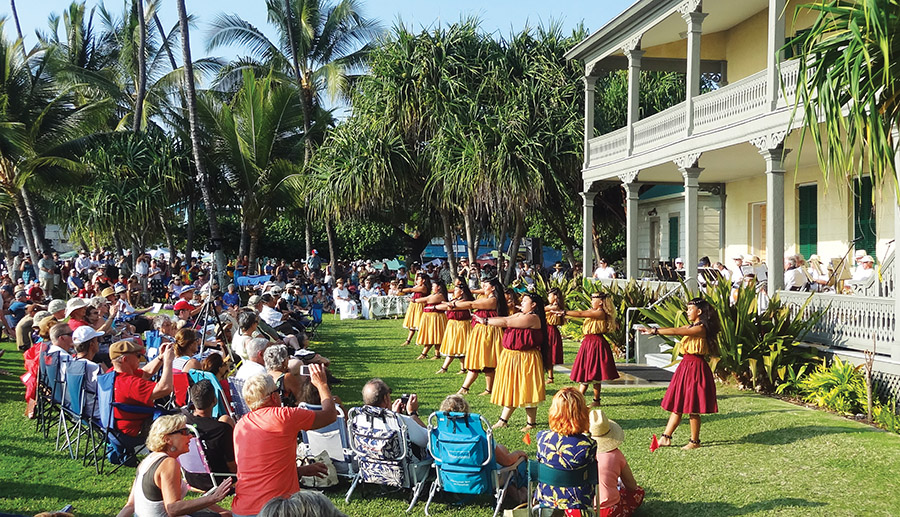
The Hulihe’e Palace Becomes a Museum
In June 1928, the Daughters of Hawai‘i held a dedication ceremony and lū‘au, and the Hulihe‘e Palace began its new life as a museum.
The maintenance of the Palace is an ongoing project. In 1975, major restoration work was started to bring Hulihe‘e back to the Kalākaua design, a project that was accomplished in four phases and completed in 1982.
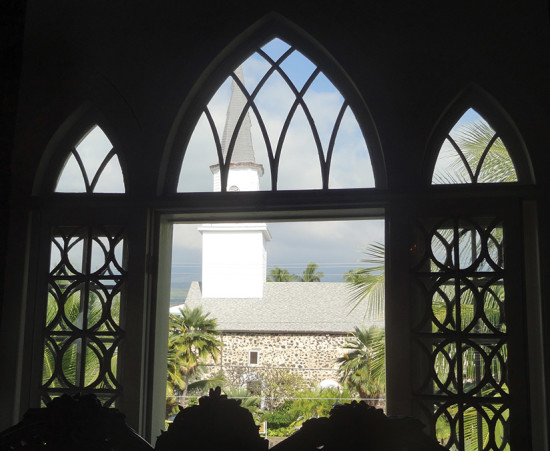
There are many important pieces of furniture in the museum. Standing in the center of the Kūhiō Room is a splendid round table 70 inches in diameter, which was made for King Kalākaua and constructed from a single piece of koa. In the same room is one of six identical massive koa trunks, which Queen Kapi‘olani took on her journey to London in 1887 when she attended the Jubilee of Queen Victoria. Carved on the front panel is Kapi‘olani’s crest and motto: “Kulia I Ka Nu‘u—Strive for the highest” (Del Piano 135).
The museum also exhibits many small items. In the Kuakini Room, you’ll see an extensive collection of handcrafted tools such as stone adzes and fishing aids, poi pounders, and implements for making kapa cloth. An exercise stone—a perfectly shaped ball believed to have belonged to Kamehameha I—is a part of the exhibit.
Today, the Daughters of Hawai‘i and the Calabash Cousins devotedly maintain Hulihe‘e and its docents are ready to share their mana‘o (knowledge) with visitors.
When you take a walk through the museum to learn its history, you bring its past forward. When the past is brought forward for the purpose of enriching people’s lives, the best parts of history are experienced in the present. It is in the mele, hula, and oli (chant). It is in the “kaona” (hidden meaning) of the stories shared by the kūpuna.
It is in the silent respect we offer others when we leave our slippers at the door.
The Daughters of Hawai‘i brought the Hulihe‘e Palace forward for us. Let us walk through the museum to experience life as it was more than 170 years ago. ❖
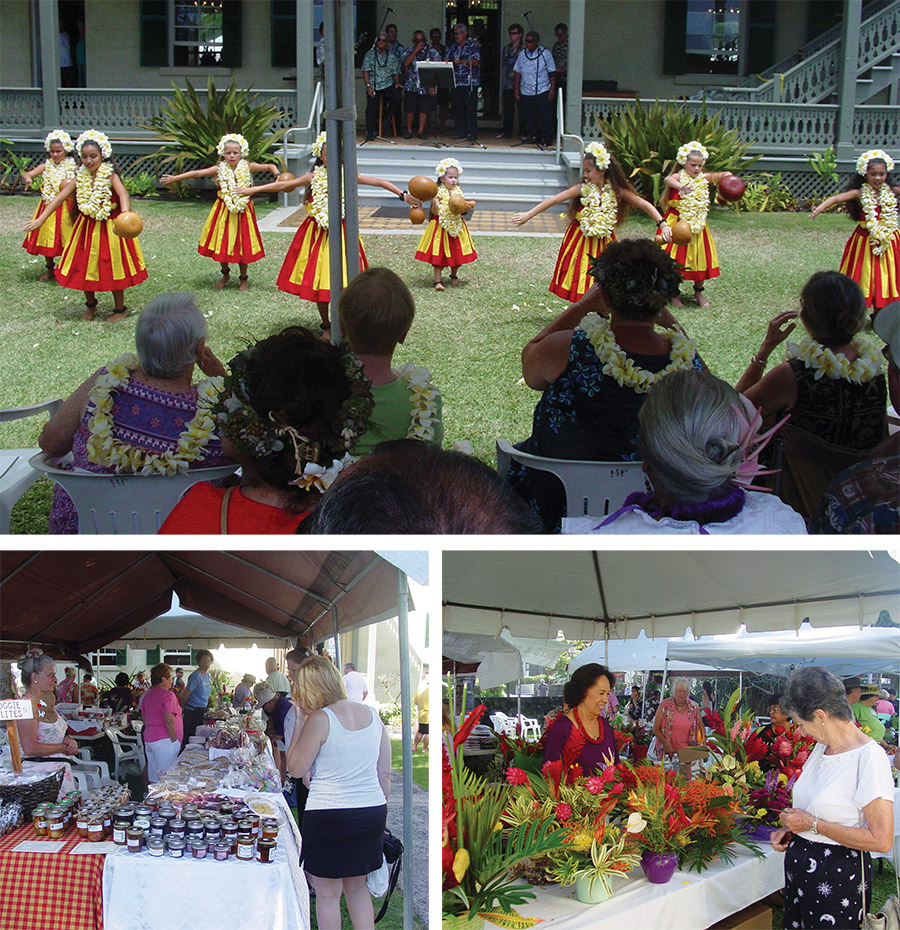
March 29, 2014—A Community Day
The Daughters of Hawai‘i and Calabash Cousins, in honor of Prince Jonah Kūhiō Kalaniana‘ole presents a “Day at Hulihe‘e” Saturday, March 29, 2014, 8:30am–4pm
All day entertainment, bake sale, lei, plants and produce, tutu’s attic, arts and craft vendors, and prize drawings throughout the day.
Cultural practitioners in pa‘i‘ai and ‘upena will be featured. Admission is free.
For more information: 808.329.9555
For more information:
Museum Hours: 9am–4pm, Monday–Saturday
Gift Shop Hours: 9:30am–4pm, Monday–Saturday
Museum Business Office: 808.329.9555
Palace: 808.329.1877, DaughtersOfHawaii.org
Photos taken inside with permission of the Daughters of Hawai‘i and are copyright protected.
Contact writer Fannie Narte: info@fannienarte.com
Resources:
Ballao, Casey. Article Contributor. 8 Jan 2014.
Del Piano, Barbara. Na Lani Kaumaka: Daughters of Hawai‘i: A Century of Historic Preservation. Honolulu: Daughters of Hawai‘i, 2005. Print.
Okimoto, Anita. Article Contributor. 7 Jan 2014.
Doyle, Emma Lyons, et al. Treasures of the Hawaiian Kingdom. A Glimpse into Hawai‘i’s Royal History…Queen Emma Summer Palace, Honolulu; Hulihe‘e Palace, Kona. Honolulu: Tongg, 1979. Print.
